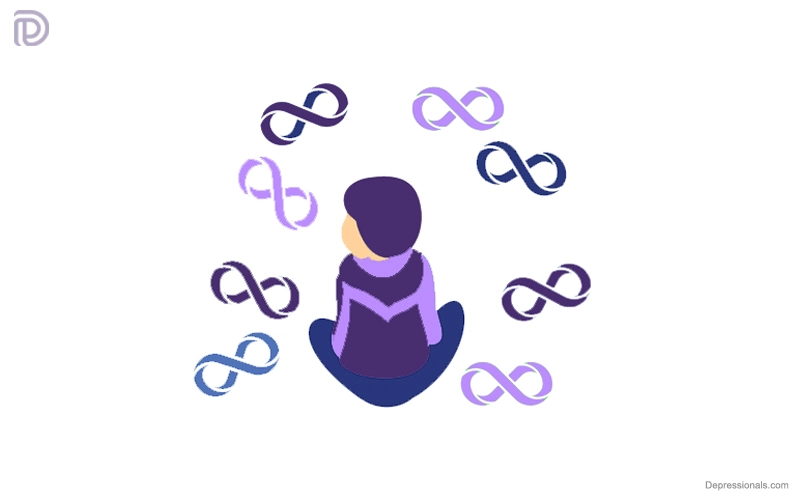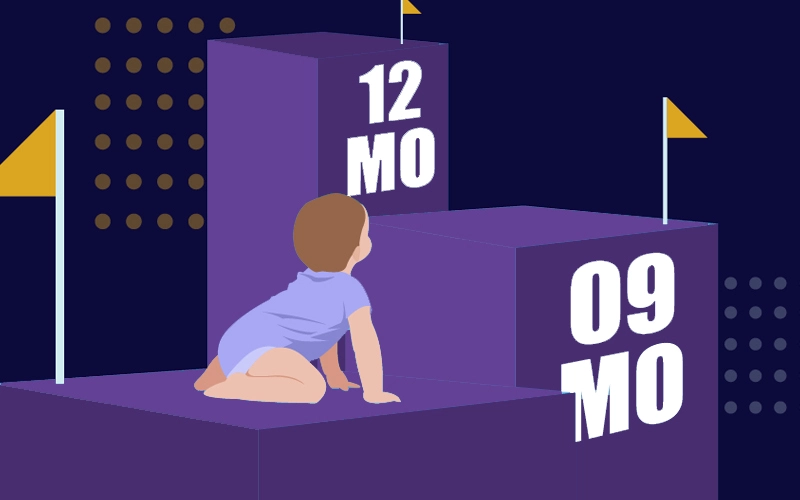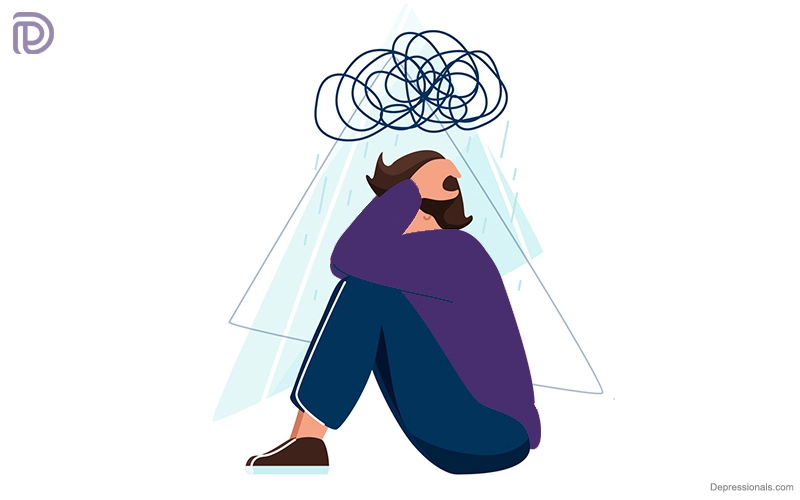Autism spectrum disorder (ASD) is generally diagnosed in childhood, usually between the ages of 2-3. However, some children with ASD continue to develop normally until young adulthood, when they lose skills, they acquired previously.
The CDC estimates that one in 59 children has autism. There are also three to four times as many boys as girls with autism spectrum disorders, and young girls tend to exhibit less obvious signs of the disorder than boys.
Read out: Selective Mutism
What is autism spectrum disorder (ASD)?
Autistic spectrum disorder (ASD) is a general term for a number of neurological disorders.
Communication and interpersonal interactions are difficult in people with these disorders. ASD patients tend to show restricted, stereotyped, and repetitive interests or behaviors.
Autism is a disorder that affects individuals of all races, cultures and economic backgrounds. Autism occurs more often in boys than in girls, according to the Centers for Disease Control and Prevention (CDC). There is a 4:1 ratio among boys and girls.
According to the CDC, nearly one in 59 children has been identified as having an autism spectrum disorder.
The number of cases of ASD is rising. According to some, environmental factors are responsible for this increase. There is debate among experts as to whether cases have increased or just more individuals have been diagnosed with the disease.
Read: Attention Deficit Hyperactivity Disorder
What are the different types of autism?
A variety of psychiatric disorders are classified and diagnosed using DSM (Diagnostic and Statistical Manual of Mental Disorders) by members of the American Psychiatric Association (APA).
As of 2013, the DSM has been updated to its fifth and most recent edition. According to the DSM-5, there are currently five distinct specific types of autism. These are:
- Whether or not associated with intellectual disability
- Whether accompanied by language impairment or not
- Medical, genetic or environmental factors that are known to cause these conditions
- Other mental, physical, or behavioral conditions can accompany idiopathic neurodevelopmental disorders
- with catatonia
It is possible to diagnose someone with one or more specifiers.
In the past, people diagnosed with autism spectrum disorders may have been diagnosed with any of the following disorders:
- Autistic disorder
- Asperger’s syndrome
- Pervasive development disorder-not otherwise specified (PDD-NOS)
- Childhood disintegrative disorder
Note that an earlier diagnosis does not mean the individual has lost their diagnosis, and they do not need a reevaluation.
The DSM-5 defines ASD as a broad diagnosis that includes disorders such as Asperger’s syndrome.
Also, check: Side Effects of Overthinking
What are the signs and symptoms of autism?
Autism symptoms usually appear between 12 and 24 months of age, during early childhood. There may also be an earlier or later onset of ASD symptoms.

Early symptoms may include difficulty communicating or socializing.
According to the DSM-5, there are two main categories of autism symptoms: communication problems and social interaction difficulties, and regressive behaviors.
Social interaction and communication problems include the following:
- Problems with communication, such as difficulty sharing emotions, belonging and sustaining a back-and-forth exchange
- The inability to maintain eye contact or read body language when communicating nonverbally
- Relationships are difficult to establish and maintain
Repetitive or restricted behaviors or activities include:
- Patterns of movement, speech or motion
- Compliance with strict routines or behaviors
- Increasing or decreasing their sensitivity to certain aspects of their environment, such as a negative reaction to a certain sound
- Obsessive or fixated interests
The severity of ASD symptoms is noted for each individual within each category.
Symptoms of autism must be present in at least two of two categories for an individual to be classified as having an ASD.
Recommended, Read: What is Stress
What causes autism?
ASD is caused by an unknown factor. Recent research shows that there is no single cause.
Autism is thought to be associated with the following risk factors:
- Being close to someone with autism
- Genetic mutations
- Genetic disorders such as fragile X syndrome
- Having older parents
- An underweight baby
- Unbalanced metabolism
- Toxins and heavy metals in the environment
- An infection history
- Depakene (Depakene) and thalidomide (Thalomid) during pregnancy
The National Institute of Neurological Disorders and Stroke (NINDS) suggests that genes and environment play a role in autism development.
However, new and old sources agree that vaccines do not cause the disorder.
According to a controversial 1998 study, autism has been linked to the measles, mumps and rubella (MMR) vaccine. The study has been criticized by other evidence, but ultimately retracted in 2010.
Check: Types of Overthinking
How is autism diagnosed?
There are several screenings, genetic tests, and evaluations involved in the diagnosis of ASD.
Developmental screenings
All children should be screened for autism between the ages of 18 and 24 months, according to the American Academy of Pediatrics (AAP).
Children with autism spectrum disorders can be identified early through screening. Early detection and intervention may be beneficial for these children.
In many pediatric offices, the Modified Checklist for Autism in Toddlers (M-CHAT) is used to screen for autism. Parental surveys consist of 23 questions. As a result, pediatricians will be able to identify children who may be at risk of having autism.
Screening is not a diagnosis. ASD isn’t always present in children who screen positive for it. Additionally, some children with ASD don’t get detected during an autism screening.
Recommended: How to help someone with Depression
Other screenings and tests
The following tests may be recommended by your child’s physician for autism:
- Testing genetic disease with DNA
- Behavioral evaluation
- Testing for vision and hearing to exclude problems unrelated to autism
- Occupational therapy screening
- Questionnaires on developmental issues, such as the Autism Diagnostic Observation Schedule (ADOS)
Teams of specialists usually make diagnoses. A child psychologist, an occupational therapist, or a speech-language pathologist may be a part of this team.
Check: Tips to overcome Depression
What is the treatment for autism spectrum disorder?
Autistic people cannot be cured, but therapies and other options can help them feel better and have fewer symptoms.
Some of the most common treatment approaches include:
- Behavioral therapy
- Play therapy
- Occupational therapy
- Physical therapy
- Speech therapy
Relaxation techniques include massages, blankets with weights, and weighted clothing. It is important to keep in mind that treatment results are individual.
Certain approaches may work well for some people on the spectrum, while others may not.
Alternative ASD treatments
Autism treatment alternatives may include:
- High-dose vitamins
- The chelation procedure removes metal toxins from the body
- Hyperbaric oxygen therapy
- Melatonin helps with sleep problems
Alternative therapies have mixed research, and many are risky.
Research and costs should be weighed against potential benefits before investing in any of them.
Also check: Stress Management Techniques
What is the impact of diet on autism?
People with autism don’t have a specific diet. Despite this, some autism advocates believe that diet can increase the overall quality of life and minimize behavioral issues.
Autism diets do not contain artificial additives as one of their foundations. Sweeteners, preservatives, and colors are included in this category.
It is possible to eat whole foods instead as part of an autism diet, such as:
- Fresh vegetables and fruits
- Lean poultry
- Fish
- Unsaturated fats
- Lots of water
Gluten-free diets are also endorsed by some autism advocates. Grains such as wheat, barley, and others contain the protein gluten.
Gluten may cause inflammation and adverse bodily responses in some individuals who suffer from Asperger’s syndrome. Despite this, scientific studies have yet to prove that gluten and casein are connected to autism.
Anecdotal evidence suggests that diet can be beneficial for people suffering from attention-deficit hyperactivity disorder (ADHD), a condition similar to autism.
Must Recommended: Multiple Strategies to Control Overthinking
How does autism affect kids?
Autism can result in developmental delays or a loss of previously acquired social and language skills for children with this condition.
A child without autism may be intrigued by simple games of pretend at the age of two. The 4-year-old who is not autistic may enjoy doing activities with other children. With autism, a child may find it difficult to interact with others or dislike them completely.
In addition to repetitive behaviors, children with autism may have trouble sleeping or compulsively eat non-food items. They may struggle to thrive in an environment that isn’t structured or predictable.
Ensure that your child succeeds in the classroom by working with their teachers if they have autism.
There are a variety of resources available to help children and their families who have autism.
A national nonprofit, The Autism Society, can help connect you with local support groups. Parents, siblings, grandparents, and friends of a child with autism can also seek support through Autism Speaks’ targeted toolkits.
Exercise and autism
Certain exercises may be helpful for children with autism in alleviating frustrations and improving overall well-being.
Your child can benefit from any type of exercise he or she enjoys. The playground and walking are both great ways to spend time with the kids.
The act of swimming can help you both to exercise and to play with your senses. Playing with their senses can be helpful for people with autism who may have difficulty processing signals from their senses.
A child with autism may have difficulty participating in contact sports. You can instead promote another kind of strengthening exercise that is both challenging and fun.
Read: Global Developmental Delay
Does autism affect girls differently?
Frequently, autism is viewed as a boys’ disease because of its gender-specific prevalence. The CDC estimates that boys have an increased risk of autism spectrum disorders by about four times compared to girls.
The fact that autism does not occur in girls does not imply that it does not occur in boys. There is an estimated incidence of 0.66 percent, or one out of every 152 girls, who suffer from autism, according to the CDC. Women may even present with autism differently.
In recent decades, early and more frequent testing has been done for autism. Boys and girls are both reported to have higher rates as a result.
What are the effects of autism on adults?
Families with loved ones who have ASD may worry about how life is for adults with ASD.
In some cases, adults with ASD can live independently or work. Some adults with ASD need ongoing support or services their entire lives.
It is possible to increase independence and make life a better experience by introducing therapies and other treatments early on.
It’s not uncommon for people on the spectrum to not be diagnosed until much later in life. Previously, medical practitioners were not fully aware of this issue.
If you feel that you may have adult autism, you should seek help. You still have time to be diagnosed.
What are the benefits of autism awareness?
The month of April is World Autism Awareness Month. The United States has also designated March National Autism Awareness Month. Many advocates have rightly argued that there should be year-round awareness of ASDs, not just for 30 days each year.
It is also important to have empathy for those with autism and to understand their differences.
The treatment and therapy that works for some people may not work for others. There may also be differences in opinions among parents and caregivers about how to advocate on behalf of a child with autism.
Autism awareness begins with understanding it, but understanding doesn’t end there.
Read: Intellectual Development Disorder
What is the difference between ADHD and autism?
It is sometimes difficult to tell the difference between ADHD and autism.
The children who have ADHD are frequently fidgety, have difficulty concentrating, and have difficulty maintaining eye contact with others. Many people on the autism spectrum also suffer from these symptoms.
The ADHD spectrum disorder is another disorder that shares some similarities with autism. People with ADHD tend to possess strong social and communication skills, whereas those without them tend to lack such skills.
Talk to your child’s doctor about possible ADHD testing if your child displays signs of hyperactivity. An accurate diagnosis is crucial to ensuring that your child receives the right treatment.
In some cases, a person may suffer from both ADHD and autism.
What is the outlook for those with autism?
There is no cure for autism spectrum disorders. Behavioral interventions are most effective when they are initiated as early as possible. A child should enroll in these programs at a young age.
Those with autism need to understand that autism is complex and that finding the most appropriate program can take some time.






I will immediately grab your rss feed as I can’t to find your e-mail subscription hyperlink or e-newsletter service. Do you’ve any? Please allow me realize so that I may just subscribe. Thanks.|
Wow, marvelous blog layout! How long have you been blogging for? you made blogging look easy. The overall look of your website is great, as well as the content!
Hello! This is kind of off topic but I need some guidance from an established blog. Is it tough to set up your own blog? I’m not very techincal but I can figure things out pretty quick. I’m thinking about making my own but I’m not sure where to start. Do you have any ideas or suggestions? Cheers